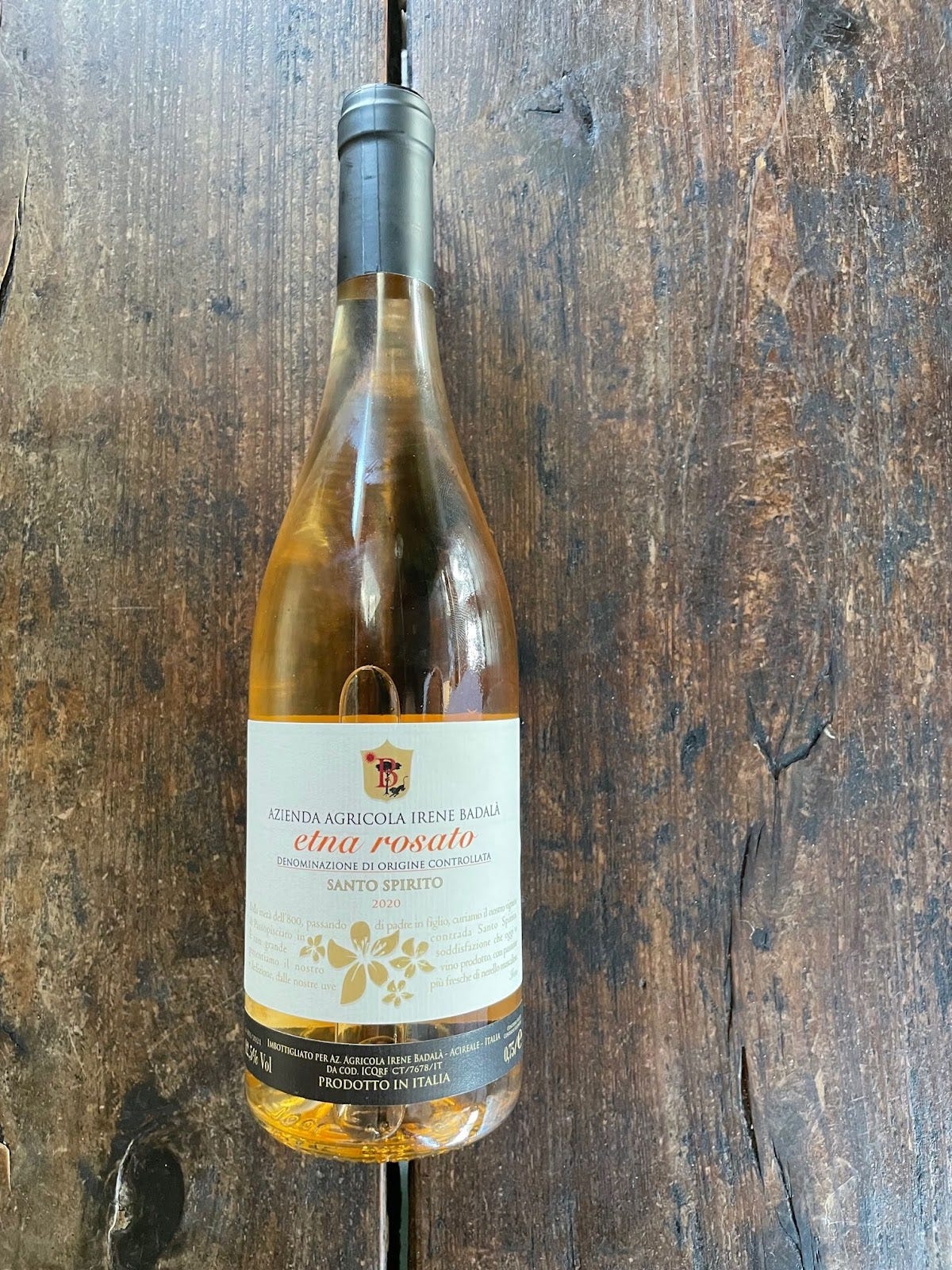Henry’s Favorite Wine (These Days)
This Time It’s Personal

Wine is mainly made in beautiful places, but Mount Etna on the northeast corner of Sicily is simply majestic. It's a highly active volcano, Europe's biggest, that's almost constantly spouting, burping or full-on erupting lava, smoke or ash. Etna is in Sicily but it's a place all unto itself. Catania, Sicily's second city, sits at the base of the volcano and is what you imagine Sicily to be. Lots of seafood markets, palm trees, endless boulevards with folks walking seemingly with no destination and lots of sunshine, all the time. Then you start on a 10-mile journey to the north end of the volcano and change comes quickly. Steep, windy roads, rocky terrain, barren landscape, dark earthy patches of soil, cool weather, a sense of stillness and solitude and not a fish to be had. What is this fish you speak of? Um, I'll just have the donkey.
Wine has been made on Mount Etna for thousands of years but in modern times it's only been relevant for about 25. Before then, it mainly produced oceans of bulk wine that got shipped to other markets. The area that produces wine on the volcano is shaped like a backwards c with villages ringing the northern, eastern and southern portions. Vineyards exist between a wide range of altitudes around the volcano, 1000-4000 feet. The phylloxera louse never took hold here as it did in most of Europe in the late 1800s due to Etna's sandy porous soils giving Etna a high proportion of ancient rootstock. As it constantly extrudes different types and combinations of lava and ash along its perimeter at different altitudes, a great variety of site-specific wines emerge that communicate their respective terroir. The most important red grape of Etna is Nerello Mascalese. It has a genetic link to Sangiovese, which means it's pretty and produces wines that are often compared to Pinot Noir or Nebbiolo, putting it in classy company indeed.
Irene Badalá makes wine on Etna's north side. She works with a tiny 3 hectare property of old to ancient vines that have been in her family for generations. Her Etna Rosso is always beautiful, honest and vintage specific. Sometimes light and ethereal, other times full, rich and almost brooding, always delicious and soulful. We've worked with it for many vintages but we'll leave her Rosso for another day. She also works as a telephone operator. 3 hectares ain't much when it comes to old rootstock. The otherworldliness of Etna struck me some years ago when I visited Irene with some friends, starting the day in hot Catania and getting stuck in a snowstorm in Etna just a short drive away. Irene assured me that the piece of crap rental car I had would not make it down the mountain in the snow and so we stayed the night. In conversation that evening, she mentioned that she sells a small quantity of red grapes to local producers. I plainly suggested she use the grapes to make a rosato for Gjelina as we already have all the rosso we needed. She was hesitant as she had never made a rosé before, but we all persisted in assuring her. Great raw material and honesty usually equals compelling results. Well yes, and then some.
The following spring we tried her first rosé effort and were floored. It was Etna in a glass. Wild berries, their green tops, mineral tang, windswept herbs, smoke, ash and clarity. And freaking delicious. A rosé for people that don't like rosé. The most personal wines are beyond flavor notes. They are a collection of opposing forces working coherently. Her rosato is both complex and endearingly simple. It communicates the person, the place and a specific time. And it simply elevates a meal. Or an afternoon on the porch. A conversation. I think she would have made a rosato anyway one day. I sometimes think I should keep my mouth shut. But not that day in the snow.
Irene Badalá Etna Rosato is available at Gjelina and at Gjusta Grocer.




